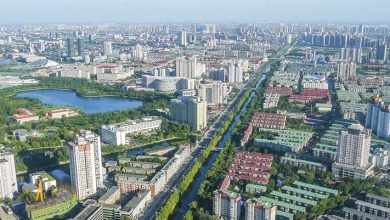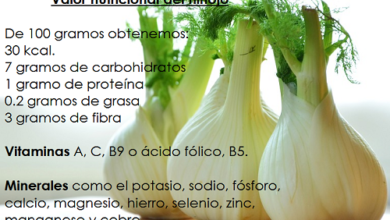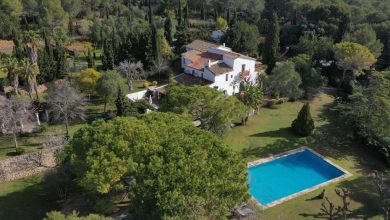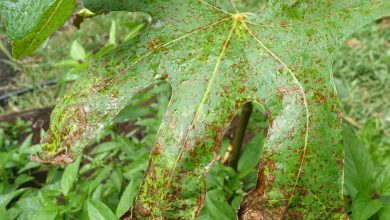Washingtonia Robusta: [Planting, Care, Irrigation and Substrate]
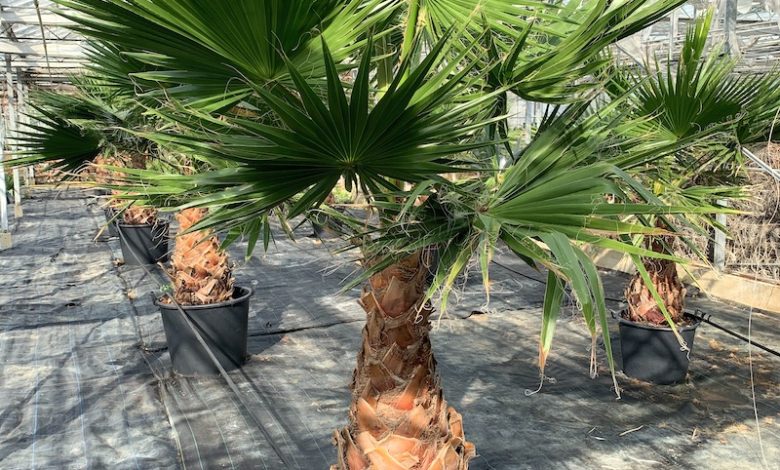
The Washingtonia Robusta (known as the Mexican Palm) is a palm -shaped plant that grows very well in warm regions.
Its tall size allows you to enjoy good shade at your feet, which is why it is often used in some areas near the sea.
It has a rapid development, even from the fruiting of the seed, which makes it a fairly easy species to work with.
Also, it can be drought resistant. Do you dare to discover it?
Important points when planting a Washingtonia Robusta
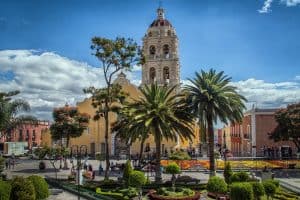 Common Name: Washingtonia, Wachintona, Mexican Palm, Pritchardia, Pichardia, Mexican Fan Palm, Mexican Palm.
Common Name: Washingtonia, Wachintona, Mexican Palm, Pritchardia, Pichardia, Mexican Fan Palm, Mexican Palm.- When? In spring.
- Where? In a clear area where it receives plenty of sunlight.
- How do we prepare the land? With organic fertilizer.
- How should we water? By drip.
- How often do you have to water? When he’s young, constantly. As an adult, once a week,especially in summer.
- What pests and diseases does it have? Thered palm weevil and the Paysandisia archon.
Characteristics of the Washingtonia Robusta or Mexican Palm
 We can consider the Washingtonia Robusta a tropical plant.
We can consider the Washingtonia Robusta a tropical plant.
It is a species of the palm family with a thin trunk, a height of up to 35 meters and leaves that form a kind of fan.
The leaves start from a branch that opens in different directions, surrounding the entire diameter of the trunk. It produces hanging flowers and fruits that are black in color.
Given its origin, in some areas it is better known as the Mexican palm tree. Its use is mainly ornamental.
Did you know…?
The Washingtonia Robusta has this name in honor of the president of the United States George Washington
Where should we plant the Washingtonia Robusta?
Due to its size, it is logical that it is an outdoor plant that needs abundant sunlight.
It only accepts external soil to be able to establish and develop as it should, so pots are usually left only for germination.
The good news is that although it has a rather warm climate, it is capable of withstanding low temperatures, down to approximately -5º C.
When should Washingtonia Robusta be grown?
 As in almost all cases, Washingtonia Robusta should be sown in the spring.
As in almost all cases, Washingtonia Robusta should be sown in the spring.
As it would take about two months for the seed to germinate, the risk of frost will have passed and the process could be carried out without any difficulty.
In addition, germination in a pot will allow its root to gain strength and behave better in the final terrain in which it is placed.
How do we prepare the land?
The Washingtonia Robusta is capable of presenting an excellent adaptation to almost all soils.
But there are certain points that are worth looking at so that it stays in better health and presence over time.
- The first thing is that it has good depth. Being such a tall plant, it is best that it is well established at its base.
- It should also have a good amount of nutrients to help it grow strong.
Hence, it is key to start the organic fertilization process days before transplanting in the place chosen for this purpose.
How to plant Washingtonia Robusta step by step?
- The easiest way to achieve a new species of Washingtonia Robusta is through the seeds that are obtained from its fruit.
- These seeds will be hydrated in plain water for a whole day to discard those that remain floating.
- Then they will be moved to a seedbed moistened with some universal substrate and kept in a sunny place, always moistening.
- After two weeks the seeds will have produced their roots and can be moved to a pot.
- This plant is capable of germinating very quickly, so in a couple of months we will be able to see its well-formed structure in the pot.
- It is advisable to wait until it is about 30 cm tall to perform the transplant to the place selected as definitive.
- During this growth stage, it can be kept in semi-shade without complications.
What care does the Washingtonia Robusta need?
The care that the Washingtonia Robusta needs will vary depending on its age and size.
Irrigation
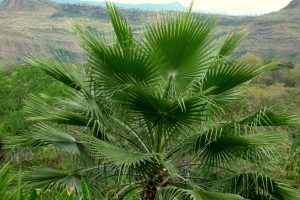 When it is very young, moisture is essential for its growth. However, when it is already an adult, it is capable of withstanding periods of drought.
When it is very young, moisture is essential for its growth. However, when it is already an adult, it is capable of withstanding periods of drought.
In any case, it is better not to make her suffer and offer her some humidity during the summer, mainly. Once a week would be fine. The rest of the year can be kept without irrigation.
the fertilizer
In the case of the subscriber, the issue is almost the same. For the young plant it is a good support to offer some organic matter that strengthens it.
But when he has already reached his adulthood, this is not essential. Of course, if some eventual fertilizer is applied to it, it will be gladly received.
pruning
However, the fact that the Washingtonia Robusta is such a tall palm tree does not mean that it does not need pruning in very specific cases.
One of the reasons that leads to pruning some branches is to seek symmetry between all the leaves.
Another reason has to do with the mistreatment that some leaf may have, so it is interesting to remove it so that it looks better and avoid damaging its sisters.
What pests and diseases does it have?
Although it is a fairly resistant species, some pests are capable of attacking it and it is also affected by certain diseases.
Pests: Paysandisia archon moth
In the case of pests, there is a moth known as Paysandisia archon that causes holes in the trunk and, in turn, weakens the entire structure.
Another pest that attacks with some frequency is the red palm weevil, which has a structure similar to a beetle.
It produces damage to both the trunk and the bud, in some cases even producing deviations in the normal structure of the tree.
To control these pests, it will be necessary to use an insecticide. We recommend those of a natural nature such as neem oil or potassium soap.
Diseases: fungi
Diseases are mostly caused by fungi and these can come from bad actions in plant care.
For example, constant watering in a land with little drainage will be an excellent environment for them to develop.
Treatment with pruning tools can also cause a condition when they are not disinfected or when cuts occur that make it difficult for the plants to heal.
The worst thing is that these diseases consume the trunk of the tree from the inside but do not manifest themselves towards the outside.
How do we differentiate Washingtonia filifera and Washingtonia Robusta?
To differentiate these two species we must focus mainly on the filaments of the leaves.
In the Washingtonia robusta the filaments are smaller and it also has them in less abundance than its sister the Washingtonia filifera.
In addition to this, we can look at the trunks. In Washingtonia robusta the trunk is usually more robust and larger than in W. filifera.
Sources and complementary bibliography
- Book: Palm Trees – Choice and care by Magda Sunyer Vives.
- Book: Washingtoni: Washingtonia Filifera, Washingtonia Robusta, Washingtonia Filibusta.
- Book: Ornamental Trees by Evelyn Maino, Frances Howard.
- Evaluation of the Different Uses of Washingtonia robusta Pruning Waste
[pt_view id=”fb5c694dez”]

